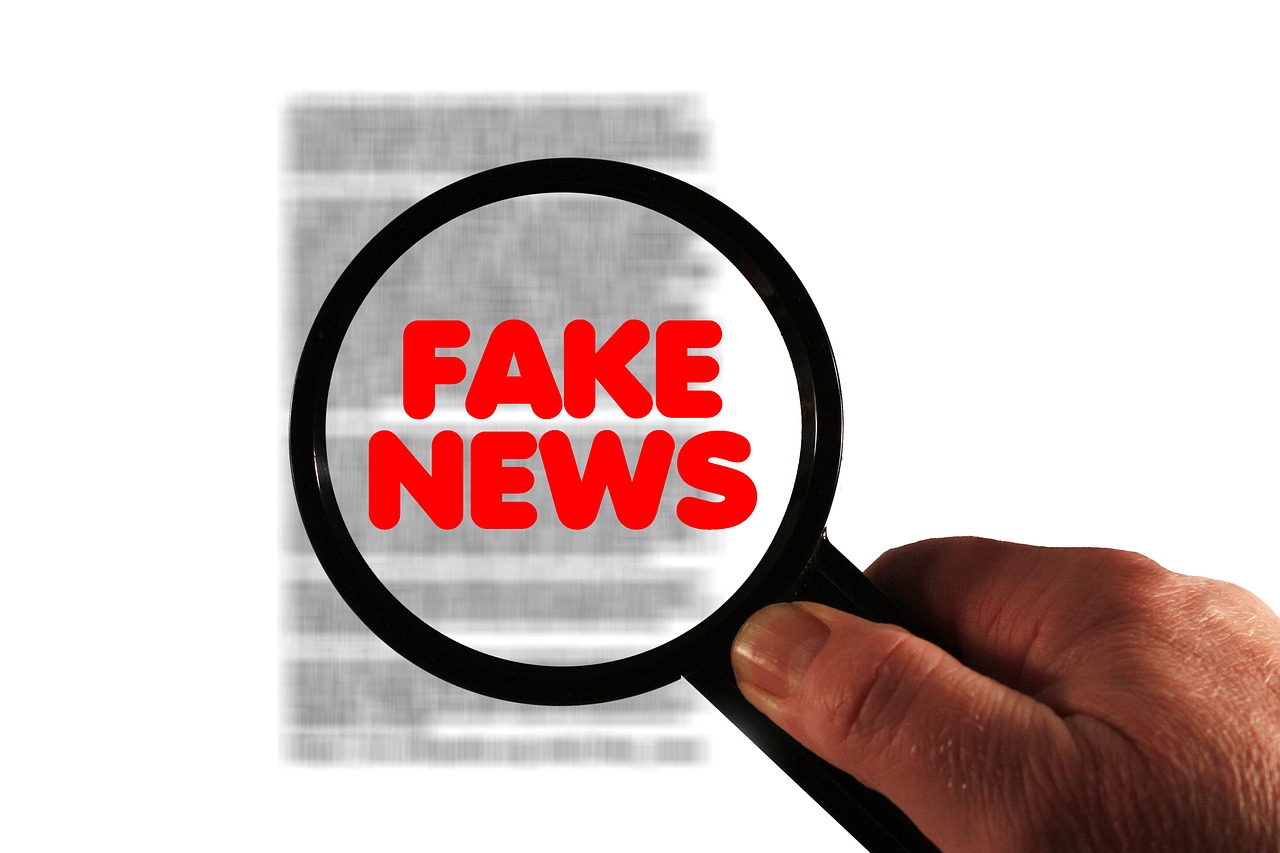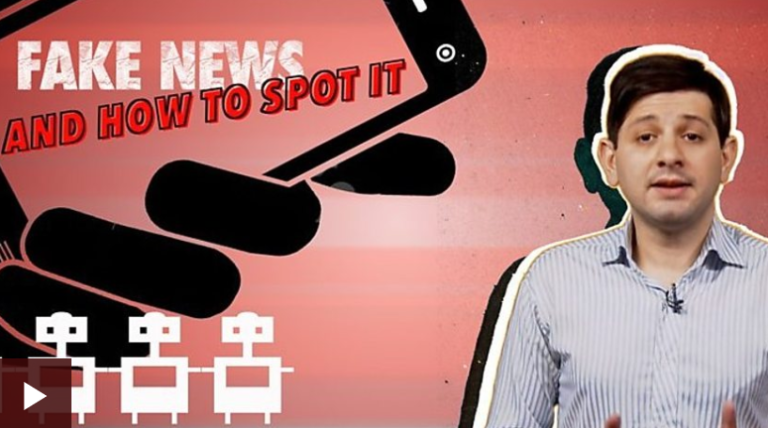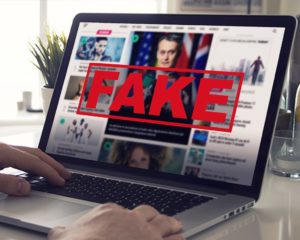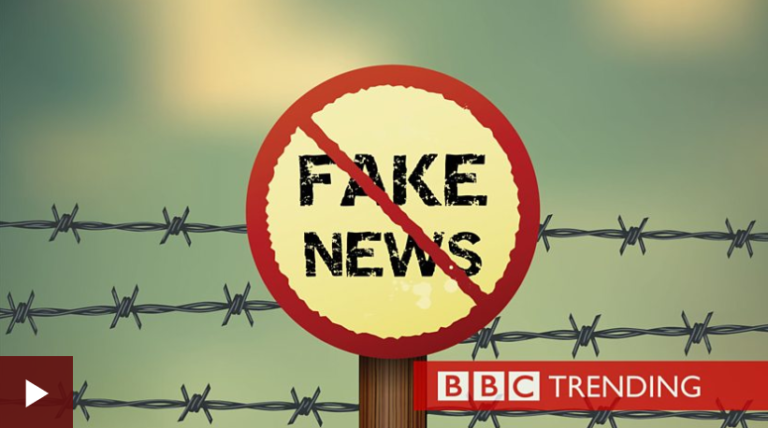Fake news
On this page
Recognizing fake news
Fake news (definition)
Why fake news
Stopping fake news
Dangers of fake news
This module is based on
References
Nowadays the boundaries between fact and fiction are fading. Especially if fake news is spread through online social media it is impossible to stop it, despite the fact that journalists and fact-checkers demonstrate that a message is false. Therefore it is important to know how to recognize fake news.
Recognizing fake news
You can use the SIFT skills model to determine if a news source is factual and trustworthy. The model was set up in the context of the corona outbreak by digital literacy expert Mike Caulfield at Washington State University.
The SIFT skills are:
| Stop! | Investigate the source | Find the original source | Trusted sources |
|---|---|---|---|
| If you feel strong emotions or surprise when reading a message or if you feel a strong need to share it. | Find out who is sharing the message and ask yourself the following questions: Do I think this source is expert? Is this source reliable enough to share the message without further checking? Most major sources have a Wikipedia page. Use Google or another search engine (copy and paste the link of the source plus “Wikipedia” in your browser) to find out more. If you don’t find enough information look at the linked sources at the bottom of the Wikipedia page. If you don’t find a page at all, the source might be unreliable. | If the source seems to have cited from other source, find the original and investigate this source. If you want to share the message, use the original article instead of the initial message. | Use sources you have found to be trustworthy. When you find an assertion online, you can “google” it together with the name of a trusted source to see if this source confirms the assertion. |
Source: “Sifting through the Pandamic” by Mike Caulfield
For more information about the SIFT methodology consult the blog of Mike Caulfield.
Watch a video about fake news from BBC News:
If you want to know how to check videos for fake news, have a look at this video:
The video (in Dutch) below explains how to check where a photo comes from:
- Go to Google Images and upload the photo
- Adjust the search period to see when a photo is used for the first time
For more information about how to do a reverse image search, look at this video:
Fake news (definition)
According to Wikipedia “fake news (also known as junk news, pseudo-news, or hoax news) is a form of news consisting of deliberate disinformation or hoaxes spread via traditional news media (print and broadcast) or online social media….”
“Fake news” overlaps with other terms, such as misinformation (accidental dissemination of false or misleading information) disinformation (false information intended to mislead) and mal-information (based on reality, but used to cause harm).
There are different categories of fake news:
- Completely made up news for the purpose to manipulate or to gain money.
- Misleading news based on a manipulated image, an out-of-context citation or a dubious “study”.
- Biased news based on an ideology and does not tell the whole truth.
- Satirical news created with a humorous intend, but not real news.
Why fake news
Fake news is timeless, but there are reasons why fake news today plays a bigger role than ever before:
- We live in an information society and by means of technological developments there is an abundance of information that needs to be shared quickly.
- In times of an election, (sometimes) fake news is used as a means to influence people.
- It is cheaper to make fake news than real journalism.
- Fake news is created to make money. The more people click on an article, the more money is made through advertising; this is called “clickbait”.
- The existence of a filter bubble: websites and search engines adjust their results to your previous online search behavior. So the information found on the internet is not objective at all. Algorithms are used to show information and posts that are similar to the interests and opinions of the reader.
- Instead of reading newspapers many people get news items from social media, but usually this are opinions about the news and sometimes the information is misleading or false. Spreaders of fake news use fake accounts to make information look more popular and psychological techniques are used to convince readers.
Stopping fake news
It is difficult to tackle this problem, because when is removing fake news contrary to freedom of expression? And, what makes a source unreliable? Fake news has major impact when it is shared a lot. When you want to react to this you need to look into a variety of views.
This video provides tips to stop the spread of fake news:
So to stop fake news:
- Investigate new stories in order to learn how to recognize fake news (sites).
- Try to find out if the source has journalistic ethics or standards.
- Reflect on news that arouses strong emotions before sharing it.
- Might it be possible that you are biased yourself?
This module is based on
Colby-Sawyer College. (2019, August 8). Recognize fake news: what Is fake news? http://library.colby-sawyer.edu/fakenews/whatisfakenews (licensed under CC BY-NC 4.0).
Ethical Journalism Network (EJN). (n.d.).”Fake news”, deep fakes, information disorder, disinformation, misinformation, malinformation. https://ethicaljournalismnetwork.org/tag/fake-news/page/4 (licensed under CC BY-NC 3.0).
Fake news. (2022, November 28). In Wikipedia.https://en.wikipedia.org/w/index.php?title=Fake_news&oldid=1124358822 (licensed under CC BY-SA 4.0)
References
Austin Community College. (2020, March 26). SIFT to find quality sources online. Libguides. https://researchguides.austincc.edu/SIFT
Caulfield, M. (2020). Sifting through the pandemic. https://infodemic.blog/
Cornell University Library. (2022, November 29). Fake news, alternative facts and misinformation workshop: Introduction. Libguides. https://guides.library.cornell.edu/fakenews
Heymans, R. (2020, March 6). Zelf corona berichten checken? : gebruik HALT. https://nieuwscheckers.nl/nieuwscheckers/geen-corona-rijswijkseplein-halt/
Posetti, J. (2019). News industry transformation: digital technology, social platforms and the spread of misinformation and disinformation. In: Unesco (Ed.). Journalism, ‘fake news’ and disinformation: A handbook for journalism education and training (module 3). https://en.unesco.org/node/296052
RMIT University. (2020, March 26). Fact checking: Resources to support assessing the factual accuracy of claims. Library Subject Guides. https://rmit.libguides.com/factchecking/home




